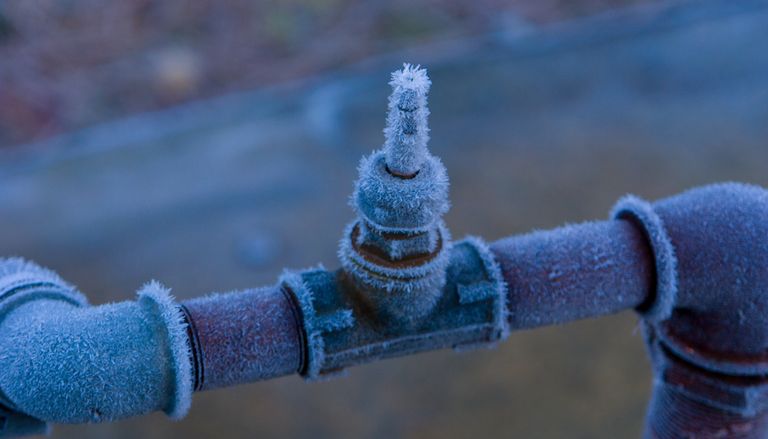Crucial Tips to Protect Against Frozen Plumbing in Cold Weather
Crucial Tips to Protect Against Frozen Plumbing in Cold Weather
Blog Article
Are you searching for related information involving Winter Plumbing Precautions: Preventing Frozen Pipes?

Winter can damage your pipes, specifically by freezing pipelines. Right here's just how to avoid it from taking place and what to do if it does.
Intro
As temperatures decline, the threat of frozen pipes rises, potentially causing costly fixings and water damages. Comprehending how to avoid frozen pipelines is important for homeowners in cool climates.
Avoidance Tips
Insulating at risk pipes
Cover pipelines in insulation sleeves or use warmth tape to protect them from freezing temperature levels. Concentrate on pipes in unheated or external areas of the home.
Heating strategies
Keep interior areas properly heated up, especially locations with pipes. Open cabinet doors to allow warm air to flow around pipelines under sinks.
How to recognize icy pipelines
Try to find decreased water flow from faucets, unusual odors or noises from pipes, and visible frost on revealed pipelines.
Long-Term Solutions
Architectural modifications
Consider rerouting pipelines far from outside walls or unheated areas. Add additional insulation to attics, basements, and crawl spaces.
Upgrading insulation
Invest in premium insulation for pipes, attics, and walls. Correct insulation aids preserve constant temperatures and reduces the threat of icy pipelines.
Shielding Exterior Plumbing
Yard hoses and exterior taps
Disconnect and drain yard hoses prior to wintertime. Set up frost-proof spigots or cover outside taps with protected caps.
Understanding Icy Pipes
What creates pipes to ice up?
Pipelines freeze when exposed to temperature levels listed below 32 ° F (0 ° C) for extended periods. As water inside the pipelines freezes, it expands, putting pressure on the pipe wall surfaces and possibly causing them to rupture.
Threats and damages
Frozen pipelines can lead to water disruptions, home damages, and pricey repairs. Burst pipelines can flood homes and cause extensive structural damage.
Signs of Frozen Water Lines
Determining icy pipelines early can stop them from bursting.
What to Do If Your Pipes Freeze
Immediate activities to take
If you suspect frozen pipes, keep faucets open to soothe stress as the ice melts. Make use of a hairdryer or towels taken in warm water to thaw pipelines gradually.
Verdict
Preventing icy pipes needs aggressive procedures and fast reactions. By recognizing the reasons, indications, and preventive measures, house owners can shield their pipes throughout winter.
6 Proven Ways to Prevent Frozen Pipes and Protect Your Home
Disconnect and Drain Garden Hoses
Before winter arrives, start by disconnecting your garden hoses and draining any remaining water. Close the shut-off valves that supply outdoor hose bibs and leave the outdoor faucet open to allow any residual water to drain. For extra protection, consider using faucet covers throughout the colder months. It’s also important to drain water from any sprinkler supply lines following the manufacturer’s directions.
Insulate Exposed Pipes
Insulating your pipes is an effective way to prevent freezing. Pipe insulation is readily available at home improvement stores and is relatively inexpensive. Pay close attention to pipes in unheated areas such as the attic, basement, crawl spaces, or garage. Apply foam insulation generously to create a buffer against the cold. You can also wrap your pipes in heat tape or thermostat-controlled heat cables for added warmth.
Seal Air Leaks
Inspect your home for any cracks or openings that could let in cold air. Seal any holes around the piping in interior or exterior walls, as well as the sill plates where your home rests on its foundation. Additionally, make sure to keep your garage door closed unless you’re entering or exiting. Leaving it open creates a significant air leak that can lead to frozen pipes.
Allow Warm Air Circulation
During cold snaps, it’s essential to allow warm air to circulate evenly throughout your home. Leave interior doors ajar to promote better airflow. Open kitchen and bathroom cabinets to help distribute heat consistently around the rooms. If you have small children or pets, be sure to remove any household chemicals or potentially harmful cleaners from open cabinets for safety.
Let Faucets Drip
A small trickle of water can make a big difference in preventing ice formation inside your pipes. When temperatures drop significantly, start a drip of water from all faucets served by exposed pipes. This continuous flow helps prevent the water from freezing. Additionally, running a few faucets slightly can relieve pressure inside the pipes, reducing the chances of a rupture if the water inside does freeze.
https://choateshvac.com/6-proven-ways-to-prevent-frozen-pipes-and-protect-your-home/

We had been shown that editorial on Preventing and dealing with frozen pipes from a friend on another domain. Sharing is good. Helping people is fun. Thank-you for going through it.
Call Today Report this page